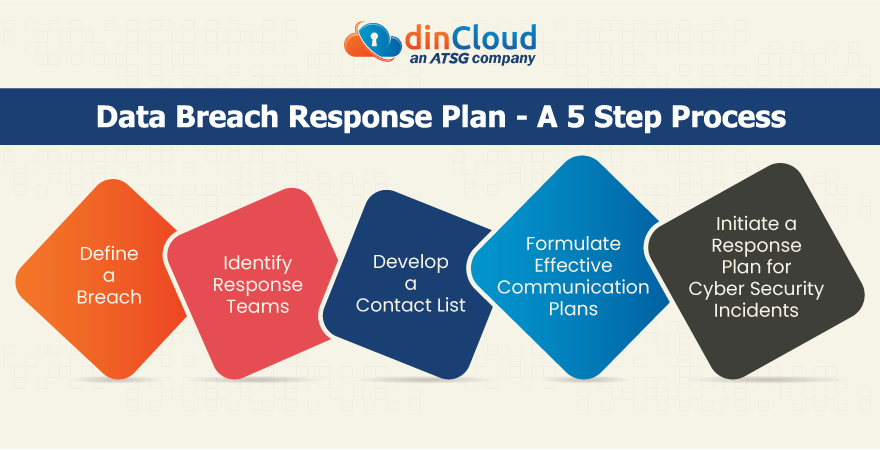Data Breach Response: Essential Steps for Recovery
In today’s digital landscape, an effective data breach response is paramount for businesses of all sizes. The reality is that a data breach can strike at any moment, leaving organizations scrambling to protect sensitive information and maintain customer trust. Swift and strategic action during the initial hours following a breach can significantly mitigate potential losses and facilitate recovery efforts. Implementing a robust data breach plan, coupled with effective cybersecurity measures, is essential in navigating the complexities of cyber incidents. Moreover, understanding the role of cyber risk insurance can further bolster your defenses and provide peace of mind in the face of unforeseen cyber threats.
When a security incident occurs, companies must engage in a comprehensive crisis management approach, often referred to as incident response. This involves not only identifying and containing the breach but also investigating its origins and communicating effectively with stakeholders. Organizations should prioritize developing a thorough breach recovery strategy, which may include financial protections through cyber risk insurance. By leveraging these resources and expertise, businesses can enhance their resilience against future cyber risks and ensure that they are well-prepared for any potential disruptions.
Understanding Data Breaches and Their Impact
Data breaches are a significant concern in today’s digital landscape, affecting organizations of all sizes. A breach occurs when unauthorized individuals gain access to sensitive data, such as customer information or proprietary company data. The impact can be devastating, leading to financial losses, reputational damage, and legal ramifications. Organizations must recognize the importance of having a robust data breach response plan in place to mitigate these risks and ensure a swift recovery.
The repercussions of a data breach extend beyond immediate financial losses. Companies may face regulatory fines, legal actions from affected individuals, and a loss of customer trust. In fact, a study found that the average cost of a data breach is over $3 million, a figure that underscores the necessity of investing in cybersecurity measures. To safeguard against these threats, businesses should consider cyber risk insurance as part of their broader cybersecurity strategy.
The Four Essential Steps in Data Breach Response
When a data breach occurs, a structured response is crucial. The first step is to contain the breach, preventing further unauthorized access to sensitive information. This requires collaboration between IT, security teams, and legal advisors to form an effective response team. Immediate containment can significantly reduce the potential damage and is often the most critical phase of data breach recovery.
Following containment, the next essential step is to investigate the breach thoroughly. Understanding the scope of the breach and how it occurred is vital for effective remediation. This phase involves gathering evidence and ensuring that all actions taken are documented meticulously. A well-coordinated investigation not only aids in recovery but also helps in refining future cybersecurity strategies.
Communication Strategies During a Data Breach
Effective communication is paramount during a data breach. Organizations must ensure that all stakeholders—employees, customers, and regulatory bodies—are informed about the breach and the steps being taken to address it. Transparency is key, as it helps to maintain trust and manage the reputational damage that often accompanies such incidents.
Moreover, having a designated spokesperson or response leader can streamline communications and ensure consistency across all messaging. This is particularly important in light of regulations like Canada’s Personal Information Protection and Electronic Documents Act, which mandates that businesses notify affected parties about breaches. A well-crafted communication strategy not only helps to mitigate the impact of the breach but also reinforces the organization’s commitment to transparency and accountability.
Remediation: The Path to Recovery
Once the breach has been contained and investigated, the focus shifts to remediation. This phase involves restoring business operations and addressing the vulnerabilities that led to the breach. Partnering with experienced data breach recovery specialists can provide organizations with the expertise needed to navigate this complex process effectively.
Additionally, offering affected customers credit monitoring services can be an excellent way to demonstrate good faith and assist in their recovery. This proactive approach not only benefits customers but can also enhance the organization’s reputation in the long run. Furthermore, planning for potential litigation is crucial; having a comprehensive business insurance policy can significantly alleviate the financial burden that often accompanies legal repercussions.
The Importance of Documentation After a Data Breach
Documentation is a critical component of any data breach response. After a breach, organizations should meticulously record every action taken during the containment, investigation, and remediation phases. This not only helps in evaluating the effectiveness of the response but also serves as vital evidence in case of audits or investigations by regulatory bodies.
Moreover, having detailed records allows organizations to learn from their experiences and improve future cybersecurity measures. By analyzing what went wrong and how it was handled, businesses can refine their data breach plans and bolster their defenses against future attacks. This continuous improvement process is essential in an ever-evolving cyber threat landscape.
Enhancing Cybersecurity Post-Breach
After a data breach, it is crucial for organizations to reassess and enhance their cybersecurity measures. Conducting a comprehensive review of current security protocols can identify vulnerabilities and areas for improvement. This is the perfect opportunity to invest in advanced security technologies and implement best practices that align with industry standards.
Additionally, employee training plays a vital role in strengthening cybersecurity. Continuous education ensures that staff members are aware of the latest threats and understand their role in protecting sensitive data. By fostering a culture of cybersecurity awareness, organizations can significantly reduce the risk of future breaches.
The Role of Cyber Risk Insurance
Cyber risk insurance has emerged as a critical component of modern business strategy, particularly in light of the increasing frequency and sophistication of data breaches. These insurance policies can help organizations mitigate financial losses associated with breaches, covering expenses related to legal fees, notification costs, and even public relations efforts to restore reputation.
Moreover, many cyber risk insurance providers offer additional resources, including access to cybersecurity experts and incident response teams. This support can be invaluable during a breach, providing businesses with the guidance needed to navigate the complexities of recovery and ensuring that they are better prepared for future incidents.
Building a Comprehensive Data Breach Plan
A well-structured data breach plan is essential for any organization looking to safeguard against cyber threats. This plan should encompass all aspects of breach response, including containment, investigation, communication, and remediation. By having a detailed strategy in place, businesses can ensure that they are prepared to respond effectively to any breach that may occur.
Additionally, regularly reviewing and updating the data breach plan is crucial as cyber threats evolve. Organizations should conduct tabletop exercises to simulate breach scenarios and assess the effectiveness of their response strategies. This proactive approach not only strengthens their defenses but also instills confidence in stakeholders that the organization is committed to protecting sensitive data.
The Importance of Employee Training in Cybersecurity
Employees are often the first line of defense against cyber threats, making ongoing training essential for maintaining a secure environment. Organizations should invest in regular training sessions that cover the latest cybersecurity practices, threat awareness, and protocols for reporting suspicious activity. This education empowers employees to recognize potential threats and respond appropriately.
Furthermore, fostering a culture of cybersecurity can encourage employees to take ownership of their role in protecting sensitive information. By providing resources and incentives for cybersecurity best practices, organizations can enhance their overall security posture and reduce the likelihood of breaches.
Continuous Improvement in Cybersecurity Practices
In the aftermath of a data breach, organizations should not only focus on recovery but also on continuous improvement of their cybersecurity practices. Regular assessments of security measures, risk management strategies, and compliance with industry regulations can help identify areas for enhancement. By adopting a proactive approach to cybersecurity, organizations can stay ahead of emerging threats.
Moreover, engaging with cybersecurity experts and participating in industry forums can provide valuable insights into the latest trends and best practices. By leveraging external knowledge and resources, businesses can strengthen their defenses and ensure that they are well-prepared for the evolving landscape of cyber threats.
Frequently Asked Questions
What is the first step in a data breach response plan?
The first step in a data breach response plan is to contain the breach immediately. This involves stopping the breach and assembling a team of IT and security experts to address the incident effectively. Prompt action is crucial to minimize potential damages.
How can I investigate the source of a data breach effectively?
To investigate the source of a data breach effectively, gather detailed information about the affected data, how the breach occurred, and whether it can be resolved in-house. Avoid making assumptions and collaborate with cybersecurity professionals for a thorough understanding.
Why is communication important during a data breach response?
Communication is vital during a data breach response to ensure transparency and coordination among legal counsel, HR, PR, and management. Proper messaging helps maintain trust with customers and meets legal obligations under regulations like Canada’s PIPEDA.
What should businesses focus on during the remediation phase of a data breach?
During the remediation phase, businesses should focus on restoring normal operations while choosing experienced data breach recovery partners. Additionally, providing affected customers with credit monitoring services can help mitigate the impact of the breach.
How can documentation aid in future data breach responses?
Documentation is essential for future data breach responses as it records actions taken during and after the breach. This can assist in defending your decisions, understanding the impact on customers, and demonstrating compliance during audits or investigations.
What role does employee training play in data breach prevention?
Employee training plays a critical role in data breach prevention by turning staff into a knowledgeable first line of defense against cyber threats. Ongoing education ensures employees are aware of the latest security practices and potential risks.
How can cyber risk insurance support businesses after a data breach?
Cyber risk insurance can support businesses after a data breach by covering financial losses and providing access to expert resources and guidance. This helps organizations recover more effectively and implement measures to prevent future breaches.
| Key Steps in Data Breach Response | Description |
|---|---|
| 1. Contain | Take immediate action with IT and security personnel to stop the breach. |
| 2. Investigate | Gather information about the breach and determine what data was affected and how it happened. |
| 3. Communicate | Inform all stakeholders and align messaging to manage the response effectively. |
| 4. Remediate | Focus on restoring normal operations and consider legal implications and customer support. |
| 5. Keep a Record | Document everything during and after the breach for future reference and compliance. |
| 6. Improve Security | Review and enhance security measures and train staff to prevent future breaches. |
Summary
Data breach response is critical for any organization facing a cyber incident. Following a structured approach in the initial hours of a breach can significantly mitigate potential losses and facilitate recovery. By containing the breach, investigating its source, communicating transparently, and remediating the effects, businesses can navigate the complex aftermath of such incidents. Ultimately, improving security and maintaining a proactive stance are essential to safeguarding the organization from future data breaches.






